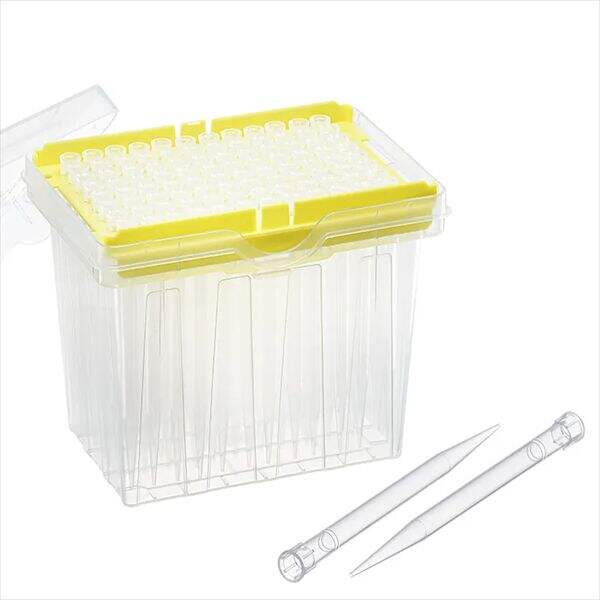Micropipettes are incredibly precise and accurate tools scientists use to measure tiny volumes of liquid. They are the equivalent of tiny straws for scientists to literally suck up minute amounts of liquid from one place and deposit it elsewhere. But the micropipette is not enough to ensure that experimentation works. This process is in selecting the correct tips, and training to perform with perfect accuracy and reproducibility.
Step 1: Select the right micropipette for your experiment Micro pipets are available in several volumes. For example, a simple micropipette device which happens to be ubiquitous in laboratories can accurately measure as little 1uL volume!
After selecting the correct micropipette is important to learn how to properly handle it. If the micropipette is held properly and a proper amount of force was applied during pipetting, then you should have successfully transferred liquid without contamination. Even though this should be plain and simple, it is something that takes training to develop.
It is equally important to select the correct tips for your micropipette. Available in a variety of sizes and materials, tips are used to measure liquid volumes accurately. The composition of the tip matters when working with chemical substances that might add noise to the experiment. The manufacturer's recommendations or symptoms of a professional can guide the selection of tips most appropriate.

After obtaining the right micropipette and tips, the next step will involve you optimizing your experimentsprecision. Utilizing the right micropipette technique can improve your accuracy and reproducibility of results.
When using micropipettes, always expel air from the tip before pipetting. This method helps in the precise determination of liquid volumes. To avoid stirring up the liquid and cannulating air into it in form of bubbles as you nerdle, always nerdel by slowly withdrawing the plunger.
The use of good quality tips can have an effect on how precise your experiments are, too. Quality and accuracy also fluctuate, so selecting high quality tips will give you consistently good results Since contaminants are undesired, choose tips that do not have them and are precision made.

Selecting the proper micropipette and tips for your research can drastically impact the output of experiments. Certain micropipettes and tips are needed for different experiments based on the volume of liquid being handled as well as its viscosity.
Some micropipettes possess special designs that make them best for specific experiments. For instance, a few of the micropipettes come with autoclavable tips which can be sterilized and reused but on other hand others are disposable.
Secondly it is also important to choose the right tips for a successful experiment! Tips for reverse pipetting, low retention tips and extra wide bore are useful in applications. Be sure to read the manufacturer guidelines in order to choose appropriate tips for your experimentation.

In fact, your micropipette skills can be 50% of the reason that your undesirable results are so inconsistent - including how you select new tips and treats them. Scientific progress and discovery ultimately hinge on measurements that are both precise (repeatable) and accurate.
Given that contamination of the liquids can mess up your experiment you have to be extremely careful when handling both (and should hence take extra care with reagents) ways in which pre-side loaded tips are handled by a user or placed into/on an instrument. Correct storage of the micropipette and tips helps to keep its accuracy and precision. The one thing that is a common practice here and Australia too might be other countries, they have specially designed boxes to hold tips of sterile origin.
Below is a step-by-step guide which can be of help for someone looking to land into laboratory work.
Therefore, the use of micropipettes and tips in scientific research is unlikely to be eliminated altogether. It would be no exaggeration to say they are what allow small volumes of liquid to indeed be transferred with accuracy. Improved precision results from technique mastery, proper micropipette and tip selection, making the experiment better. Please consult the manufacturer or a specialist to choose an appropriate micropipette and tips for your experiments. Learn to take care of the micropipette and tips, keep it back properly have good storage because now you are on your way towards being an efficient lab professional.
High Precision micropipette and tipsR D Center can complete all processes product design, mold design, manufacturing, precise processing, mold design, process customization and biological verification well production on large scale.
laboratory a professional one, cell culture laboratory, micropipette and tipslaboratory, robotic tips verification laboratory, etc., which can be used to perform one-stop biological test performance integrated research development consumables. Reagents instruments.
Modernized equipment imported high quality raw materials ensure reliability of quality. CellPro has more than 100 completely automated production micropipette and tips, FANUC, ARBURG, ENGEL, TOYO other brand imported injection machinery ensure production and capacity.
products certified according to ISO9001, ISO14001, ISO13485 quality management systems CE FDA micropipette and tips.